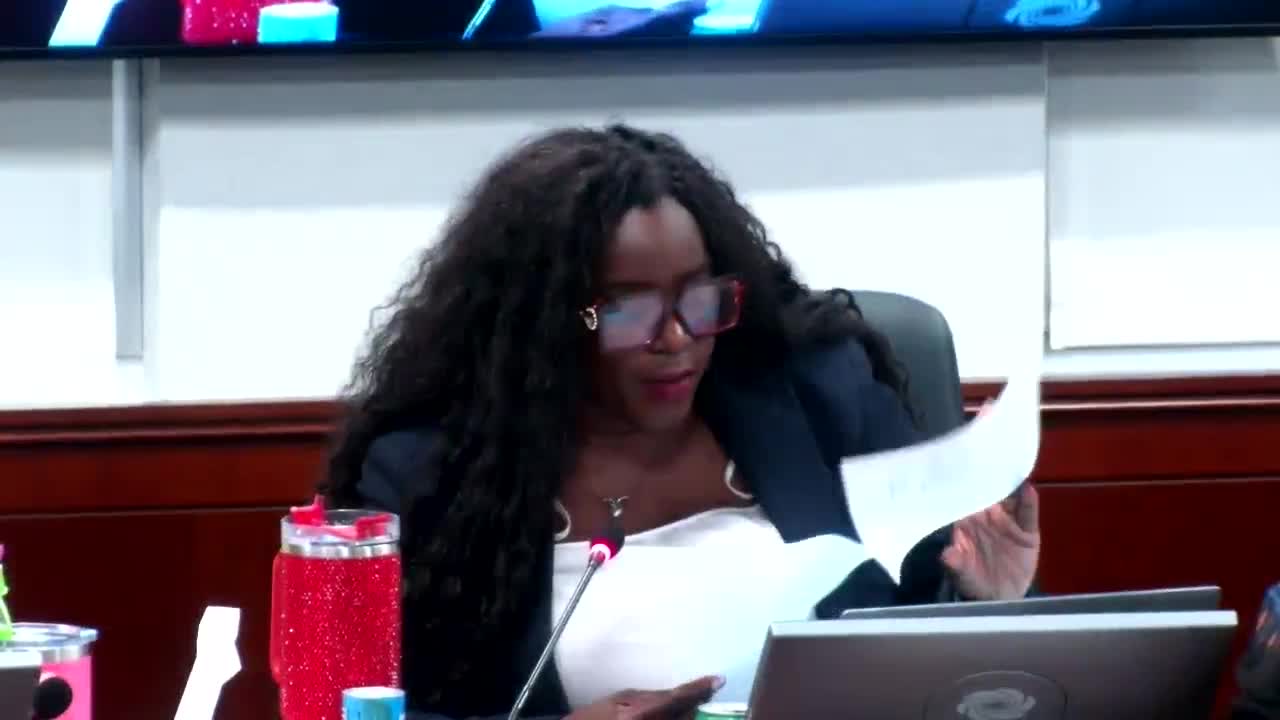Health Department outlines Prince George's County's opioid abatement initiatives progress
June 05, 2025 | Prince George's County, Maryland
This article was created by AI summarizing key points discussed. AI makes mistakes, so for full details and context, please refer to the video of the full meeting. Please report any errors so we can fix them. Report an error »

The Prince George Health, Human Services, and Public Safety Committee met on June 5, 2025, to discuss significant advancements in the county's opioid abatement initiatives. The meeting featured a presentation from the Health Department's Behavioral Health Division, highlighting the ongoing efforts to combat the opioid crisis that has deeply affected the community.
Dr. Jacqueline Somerville, the Associate Director for Behavioral Health, introduced the team and emphasized the collaborative approach taken over the past year. The county established a task force in June 2024, bringing together over 100 professionals from various sectors, including public health, safety, and education, to develop a comprehensive plan for addressing the opioid epidemic. This initiative recognizes that no single solution can resolve the crisis; instead, it requires a multifaceted strategy that includes prevention, harm reduction, treatment, and recovery support.
Samantha Karen, the Program Manager for the opioid program, provided key statistics that underscore the severity of the issue. A recent study revealed that 42% of American adults know someone who has died from an overdose, highlighting the widespread impact of the crisis. In Maryland alone, over 2.2 billion prescription painkillers were distributed between 2006 and 2019, contributing to the ongoing epidemic.
The committee learned that Maryland is set to receive $650 million in opioid settlement payments, with Prince George's County allocated $45 million. These funds are intended for opioid remediation efforts, with at least 70% earmarked for future initiatives. The flexibility of this funding allows the county to implement a wide range of strategies, from prevention programs in schools to outreach for individuals struggling with addiction.
The meeting concluded with a commitment to prioritize the needs of those affected by opioid use disorder, ensuring that the strategies developed will directly benefit the community. As the county moves closer to implementing its comprehensive plan, residents can expect to see a concerted effort to address the opioid crisis and its far-reaching effects on families and neighborhoods.
Dr. Jacqueline Somerville, the Associate Director for Behavioral Health, introduced the team and emphasized the collaborative approach taken over the past year. The county established a task force in June 2024, bringing together over 100 professionals from various sectors, including public health, safety, and education, to develop a comprehensive plan for addressing the opioid epidemic. This initiative recognizes that no single solution can resolve the crisis; instead, it requires a multifaceted strategy that includes prevention, harm reduction, treatment, and recovery support.
Samantha Karen, the Program Manager for the opioid program, provided key statistics that underscore the severity of the issue. A recent study revealed that 42% of American adults know someone who has died from an overdose, highlighting the widespread impact of the crisis. In Maryland alone, over 2.2 billion prescription painkillers were distributed between 2006 and 2019, contributing to the ongoing epidemic.
The committee learned that Maryland is set to receive $650 million in opioid settlement payments, with Prince George's County allocated $45 million. These funds are intended for opioid remediation efforts, with at least 70% earmarked for future initiatives. The flexibility of this funding allows the county to implement a wide range of strategies, from prevention programs in schools to outreach for individuals struggling with addiction.
The meeting concluded with a commitment to prioritize the needs of those affected by opioid use disorder, ensuring that the strategies developed will directly benefit the community. As the county moves closer to implementing its comprehensive plan, residents can expect to see a concerted effort to address the opioid crisis and its far-reaching effects on families and neighborhoods.
View full meeting
This article is based on a recent meeting—watch the full video and explore the complete transcript for deeper insights into the discussion.
View full meeting
